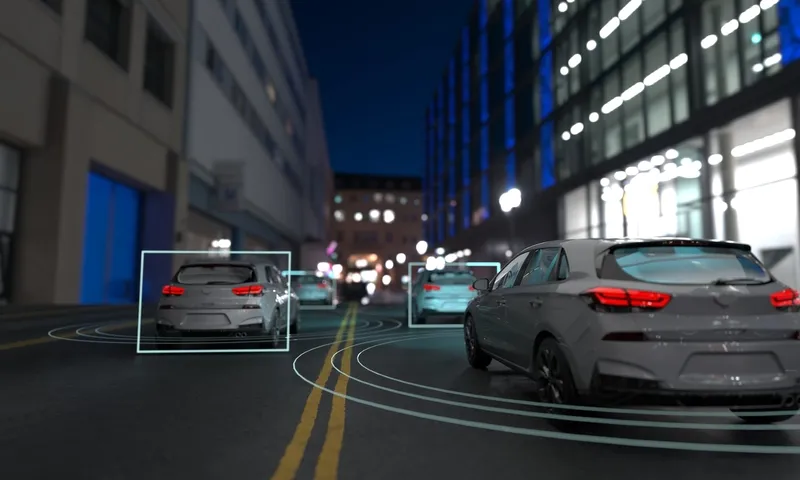Through its Transportation Lighting and Safety program, the Lighting Research Center (LRC) at Rensselaer Polytechnic Institute is evaluating the potential for new lighting technologies and approaches to improve driving safety at night, including new car headlight systems.
For the study, vehicle manufacturer Audi AG has provided the LRC with an A7 equipped with adaptive high beam ‘matrix lights’ that allow drivers to benefit from using high beams all the time while selectively dimming a portion of the bea
June 26, 2015
Read time: 3 mins
Through its Transportation Lighting and Safety program, the Lighting Research Center (LRC) at Rensselaer Polytechnic Institute is evaluating the potential for new lighting technologies and approaches to improve driving safety at night, including new car headlight systems.
For the study, vehicle manufacturer2125 Audi AG has provided the LRC with an A7 equipped with adaptive high beam ‘matrix lights’ that allow drivers to benefit from using high beams all the time while selectively dimming a portion of the beam in the direction of other drivers to prevent glare. In the Audi system, the beam pattern is split into numerous individual light-emitting diodes (LEDs) arranged in a grid or matrix that adapts to the surroundings in real-time. The lighting system is being evaluated by LRC researchers this June.
The LRC earlier studied adaptive high beams as part of a project for the834 National Highway Traffic Safety Administration (NHTSA) that resulted in a report to Congress on nighttime glare and driving performance. Michael Perel, retired chief of the NHTSA Human Factors Division who initiated the project, said, “At that time, because of driver glare complaints and high nighttime crash rates, we wanted to investigate whether dynamically changing the forward light distribution in response to real-time road and traffic conditions could provide drivers with increased seeing distance without causing increased glare. The study did find potential benefits with this concept, variations of which are now being implemented by Audi and other manufacturers.”
LRC’s research for NHTSA demonstrated that forward visibility under adaptive high-beam systems was comparable to that under high beams, while disability and discomfort glare for oncoming drivers were comparable to levels experienced when facing low beams. The results of a recently published LRC study of driver visual performance suggest that nighttime crashes might be reduced up to seven per cent when adaptive high beams are used, relative to low-beam headlights.
Current requirements for vehicle forward lighting in the US specify the photometric performance of low- and high-beam headlight patterns, and vehicles are required to have a set of low-beam and a set of high-beam headlights conforming to these specifications. Adaptive high beams have not been used on vehicles in the US because the modifications to the high-beam beam pattern result in a pattern of illumination that does not conform with either the high- or the low-beam performance standards.
“Our expectation is that testing at Rensselaer of the Audi MatrixBeam system used in Europe will help ongoing standards development efforts in the US,” said Stephan Berlitz, head of Development, Lighting Functions and Innovations at Audi. “We believe the introduction of this technology in the US would be very well-received by customers, just as it has been in Europe and elsewhere, so we are happy to do all that we can to support standards and test procedure development for the US market.”
For the study, vehicle manufacturer
The LRC earlier studied adaptive high beams as part of a project for the
LRC’s research for NHTSA demonstrated that forward visibility under adaptive high-beam systems was comparable to that under high beams, while disability and discomfort glare for oncoming drivers were comparable to levels experienced when facing low beams. The results of a recently published LRC study of driver visual performance suggest that nighttime crashes might be reduced up to seven per cent when adaptive high beams are used, relative to low-beam headlights.
Current requirements for vehicle forward lighting in the US specify the photometric performance of low- and high-beam headlight patterns, and vehicles are required to have a set of low-beam and a set of high-beam headlights conforming to these specifications. Adaptive high beams have not been used on vehicles in the US because the modifications to the high-beam beam pattern result in a pattern of illumination that does not conform with either the high- or the low-beam performance standards.
“Our expectation is that testing at Rensselaer of the Audi MatrixBeam system used in Europe will help ongoing standards development efforts in the US,” said Stephan Berlitz, head of Development, Lighting Functions and Innovations at Audi. “We believe the introduction of this technology in the US would be very well-received by customers, just as it has been in Europe and elsewhere, so we are happy to do all that we can to support standards and test procedure development for the US market.”








